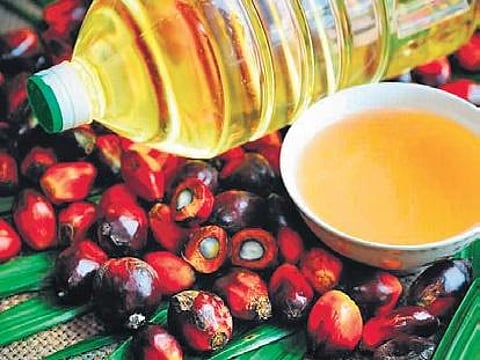

KOCHI: Kerala is planning a major push to more than double the area of oil palm cultivation over the next five years, luring farmers through subsidies and price support mechanism, to bring down the state’s heavy dependence on imports of palm oil for domestic use. The state, which grows oil palm in about 6,200 hectares (ha), is aiming to extend the farming to another 6,500 ha by 2027-28, mostly through Kollam-based Oil Palm India, Kottayam-based Plantation Corporation of Kerala (PCK) and individual farmers spread over 13 districts. Kerala consumes 2.5 lakh tonnes of palm oil per year but produces merely 30,000 tonnes of fresh fruit bunches (FFBs). Crude palm oil forms only 17% of the FFBs.
“India is overly dependent on imports, mostly from Indonesia and Malaysia. The idea is to promote oil palm cultivation as an alternative to rubber and other crops, given the rising prices of the edible oil,” said Vincent George, general manager (projects), Oil Palm India, a 51:49 joint venture company of Kerala and the Centre. Oil Palm India, which has 3,646ha of plantation spread over three estates — Yeroor, Chithara and Kulathupuzha in Kollam — would drive future expansion.
George said individual private farmers will be encouraged to shift from rubber and other traditional crops to oil palm through subsidies and viability prices will also be pushed. The state provides a subsidy of `42,000/ha for the first four years. It also provides `10,500 per tonne of FFB as the base price to support the farmers. Now, the crop fetches `17,000 per tonne.
A senior officer at PCK, which has its oil palm plantation in 705 ha of its estate in Kalady, said the company is planning to increase the area under oil palm by another 60ha in 2023. “We have severe constraints to expand the area under cultivation as our Kalady estate is close to Sholayar Valley and Athirappilly and faces frequent elephant attacks,” he said. The price of palm oil shot up from `411/10kg in 2015 to `1,068/10kg in 2021. The price of fresh fruit bunches has shot up from `7-8/kg to `19/kg after the Ukraine war began.
Oil Palm India’s George said the climate in Kerala is suited for oil palm cultivation, and the tree starts to bear fruit in the fourth year. “The life span of an oil palm tree is 35 years, and it starts to yield 4.5kg per bunch in the fourth year, which goes up to 20kg per bunch the eighth year onwards, on an average,” he said, adding that a tree is expected to yield 12 bunches, which makes it about 240-250kg per tree. One hectare can accommodate 143 oil palm trees.
He said though 3,700 individual farmers ventured into oil palm farming when the government compiled a list in 2000, the figure has dropped now after many abandoned the crop due to various factors including high labour cost and fall in FFB prices in between. Farmers have to take their fresh fruit bunches to Oil Palm India’s processing unit in Kollam, which has a capacity of 20 tonnes/hour. “We provide the transportation cost to the farmers over and above the procurement price,” said George.
Experts said though there will be volatility in the prices, there is a big scope for improvement in the area of oil palm cultivation in the state even if a portion of the rubber plantation is converted to oil palms. “In the first four years, farmers can go for inter-crops such as plantains, ginger, pineapple and vegetables,” said George.